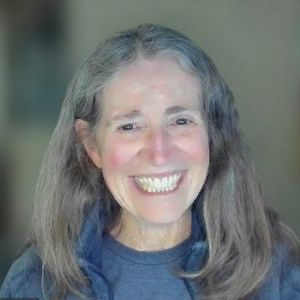
- This event has passed.
Weimer Distinguished Lecture, Dr. Donna S. Anderson, CSM
November 30, 2023 @ 3:30 pm - 6:00 pm

Weimer Distinguished Lecture, Dr. Donna S. Anderson, Geology & Geological Engineering, Friedhoff Hall, 3:30-6PM
‘Golden’s Mining Roots and Legacies: A Journey in Geoheritage’
Abstract: Gold in Golden? Clay, beer, sewers, brick, and spark plugs? Aggregate, paved streets and open space? Clear Creek and tubing?
Golden’s 160+year mining history left these and other legacies, forming a rich geoheritage in which Colorado School of Mines played a continual role since 1874. Golden began its Euro-American life as a camp for alluvial placer-gold fields to the east (Arapahoe Bar) and west (Idaho Springs) in 1859. Full of local resources due to its unique geology and setting, Golden became a mining center for Dakota and Laramie clay and coal and Lykins limestone, most of which was consumed locally or in the case of brick-clay, in “far-off” Denver. Fueled by local coal, Golden in the late 1800s had five smelters processing ore and belching “smoke,” a paper-mill, several brick factories, and a now-famous beer-brewery. During this time, however, chronic complaints about Clear Creek water quality helped prompt Golden’s acquisition of a then-pristine domestic water supply on Lookout Mountain.
Post-1900 Golden was a major Dakota and Laramie clay-mining center, all fostered by rising public health awareness (sewers promote health), Prohibition (of alcohol), and World War I (porcelain embargo). Dust, mud, interurban rail-lines, and automobiles created demand for aggregate quarried from Table Mountain basalt and Precambrian gneiss of the Front Range. Skyrocketing aggregate demand post-WW II collided with changing public attitudes about the environment in the late 1960s. The now-public open-spaces on the Table Mountains and along the Front Range are rooted in aggregate-mining controversies. Clear Creek water quality finally reached a nadir in 1980 when Golden endured its last “orange-water” event. Remediation of upstream acid mine-drainage and waste-water (aka sewage) treatment, as well as soil and buildings from a long-time Mines experimental lab, led to successful Clear Creek cleanup where trout fishing, kayaking, and tubing are popular today.
Bio: Dr. Donna Anderson, Affiliate Faculty in Geology, Colorado School of Mines
Donna Anderson is a semi-retired geologist, working since 1974 first in geotechnical engineering in California and later in the oil and gas industry in the western U.S. and internationally. She received a B.A. in Earth Science and Geography at Cal State Fullerton (1974), an M.S. in Geology at UCLA (1980), and a Ph.D. in Geology (sedimentology/stratigraphy) at Mines (1997). Her post-Ph.D. career interwove industry and academia. She was a consultant and geological advisor in the oil and gas industry, retiring in 2015. Since 2000, she has been on the faculty in the Mines Dept. of Geology and Geological Engineering as a research professor and now, an Affiliate Faculty. She has taught Mines undergraduate and graduate students in the field, core lab, and classroom and been on dozens of Mines thesis committees across departments. Throughout her career she has participated in geologic societies, foundations, and local community groups. Having moved toward community outreach, today she enjoys peeling back the layers of the geologic landscape for the non-geologist. Donna and co-author Paul Haseman recently published Golden Rocks: The Geology and Mining History of Golden, Colorado, a free eBook in the Arthur Lakes digital repository.
This lecture is scheduled in a hybrid format. If you would like to join the meeting please:
Join from PC, Mac, Linux, iOS or Android: https://mines.zoom.us/j/97180679868?pwd=WXo2eXRhWFluTVpHbTZNZXlqUmNTUT09
Meeting ID: 971 8067 9868
Password: 421490
